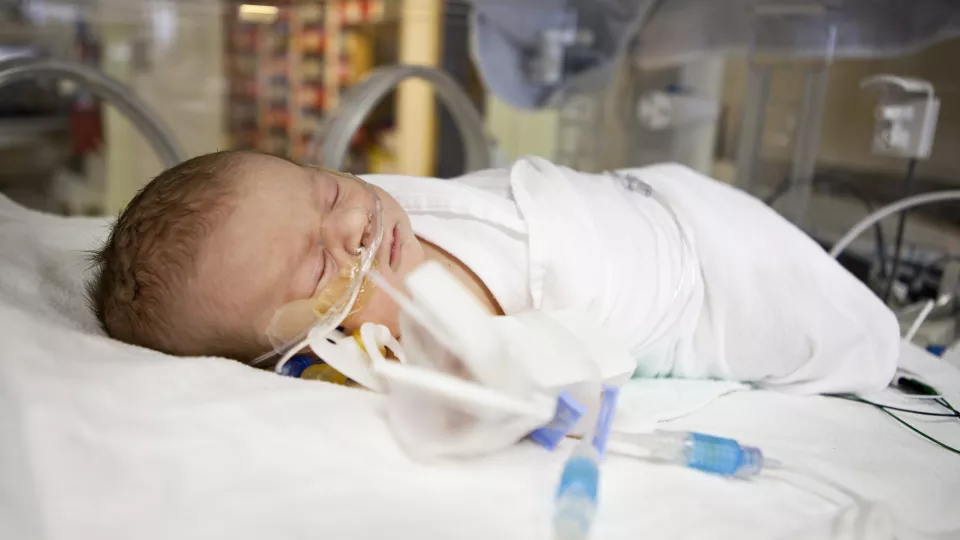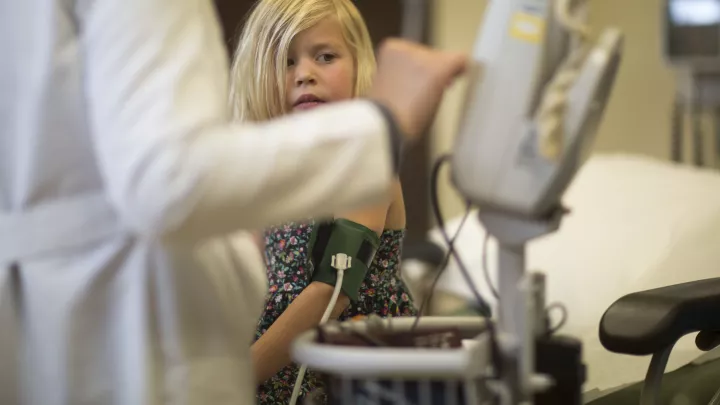
Deep Vein Thrombosis Affects 3% of Central Venous Catheters in NICU Patients
Central venous catheters are frequently used in babies in neonatal intensive care units (NICUs)—providing key nutrition, fluids, and medications. But while these catheters are critical for survival, they can also be linked to risks such as deep vein thrombosis.
Thromboses can lead to a host of issues, including long-term swelling of the affected limb, pulmonary embolism, longer hospital stays, and mortality. And yet, little is understood about how frequently these events occur in NICU patients—and whether certain catheter characteristics might increase that risk.
Now, a new study at Children’s Hospital Los Angeles is shedding light on the answers to these questions. The team’s preliminary data recently found that about 3% of central venous catheters placed in NICU babies were affected by blood clots.
Researchers also examined the impact of specific catheter and patient characteristics on thrombosis risk. Results were presented by lead author Molly Easterlin, MD, MS, at the 2024 Pediatric Academic Societies meeting in Toronto.
“Our data shows that catheter-related thrombosis is relatively common in NICU patients and may be linked to specific catheter and patient risk factors,” says Dr. Easterlin, a neonatologist in the Fetal and Neonatal Institute at Children’s Hospital Los Angeles.
Key findings

Although prior studies have examined the issue of central venous catheters in NICU patients, that literature often lacks details of the actual catheters used and where they were placed, Dr. Easterlin says.
“This detailed granular data can be hard to come by in existing large data sets,” she notes. “Even mining your own electronic medical record data can be difficult because you traditionally have to rely on chart review to pull out variables for thousands of patients.”
To solve this problem, Dr. Easterlin and her colleagues partnered with CHLA data science experts. The team used natural language processing—a form of machine learning—to create a database of every central venous catheter placed in a NICU patient from January 2017 to December 2023.
That database includes about 3,900 central venous catheters that were placed in approximately 2,100 unique patients in the Level IV Steven & Alexandra Cohen Foundation Newborn and Infant Critical Care Unit (NICCU) at CHLA.
In addition to finding a 3.6% rate of deep vein thrombosis among those catheters, the team found that:
- Catheters placed in the femoral vein or lower extremity blood vessels were more likely to be associated with clots.
- Peripherally inserted central catheters (PICCs) were linked to thrombosis events more frequently than other catheter types, such as umbilical catheters.
- Catheters with two lumens had a higher risk of clotting than those with one lumen.
- Central lines affected by thrombosis were in place for a longer amount of time than those not linked to clotting.
Integrating data to improve care
Dr. Easterlin notes that a multidisciplinary approach is key to the study, which is ongoing. In addition to neonatologists and data science experts, the team includes Joseph Miller, MD, MS, Director of Interventional Radiology at CHLA and senior author on the study.
“Dr. Miller’s team places these central lines in patients and sees many of the complications when they arise, so he brings a different perspective to the issue of thrombosis in these patients,” she explains. “This work would also not be possible without the incredible expertise of our Data Science team, Mohit Mehra and Xinwen (Melody) Li, in extracting this information from electronic medical records.”
The team is now working to develop a real-time dashboard that could be integrated into the electronic medical record. The dashboard would show the characteristics of every central line placed in a patient—including type of catheter, where it was placed, number of lumens, and more.
“Our goal is to be able to use this database in real time to provide patient-specific clinical guidance,” Dr. Easterlin explains. “The goal is to better centralize all this information and help guide decision-making that can hopefully reduce these complications in patients.”
Study authors, all from CHLA, were Molly Easterlin, MD, MS; Mohit Mehra, MS; Xinwen Li, MS; Srikumar Nair, MD; Philippe Friedlich, MD, MSEpi, MBA; and Joseph Miller, MD, MS.


